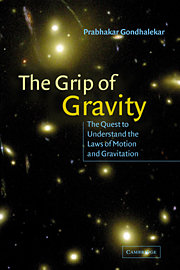Summary
The Arab instrumentation, observations, astronomical tables and maps retained their superiority at least until the middle of the thirteenth century. But the diffusion of Greek literature from the Middle East and Spain gradually rekindled the spirit of inquiry in Europe. In the twelfth and the thirteenth centuries the writings of Aristotle on physics, metaphysics and ethics became available in Latin, translated from either Greek or Arab sources. These were crucial for the greatest of the medieval Christian thinkers, St Thomas Aquinas (1225–1274 AD). Aquinas studied Aristotle in great detail and wrote numerous commentaries on a variety of Aristotle's works. One of the Aristotelian themes that influenced Aquinas was that knowledge is not innate but is gained from the senses and from logical inference of self-evident truths. To this Aquinas added divine revelation as an additional basis for inference. Aquinas used Aristotle's dictum that everything is moved by something else to argue that the observable order of cause and effect is not self-explanatory. It can only be explained by existence of the ‘First Cause’ or God. The concept of the ‘First Cause’ can be traced back to the Greek thinkers and had become an underlying assumption in the Judeo-Christian world-view. The argument for the existence of God inferred from motion was given doctrinal status in the first two ‘proofs of God’ of Aquinas:
• Things are in motion, hence there is a first mover
• Things are caused, hence there is a first cause
But where Aristotle was concerned with understanding how the world functions, Aquinas was concerned more fundamentally with explaining why it exists.
- Type
- Chapter
- Information
- The Grip of GravityThe Quest to Understand the Laws of Motion and Gravitation, pp. 25 - 50Publisher: Cambridge University PressPrint publication year: 2001

